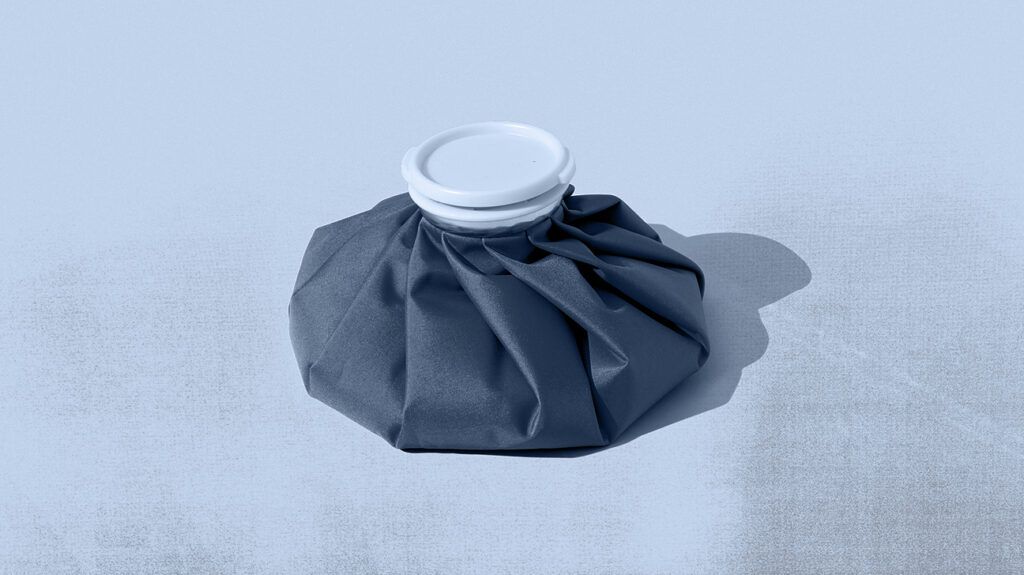Applying an ice pack to the head may help numb the area and relieve the pain migraine can cause.
Ice packs can be a natural approach to treating migraine.
Using ice packs can be an alternative to over-the-counter and prescription medications for migraine, allowing people to avoid taking a pill every time their head hurts.
This article reviews the effect of ice packs on migraine, how to use ice packs to relieve migraine symptoms, the strategies that can help prevent the onset of migraine, and when a person should contact a doctor.

Ice packs
This is because applying a cold pack to the head can help numb the area where the pain develops by constricting the blood vessels and slowing the signals of pain that nerves send to the brain during a migraine episode.
Cold compresses may also help relieve those migraine that develop due to heat or sun exposure.
However, the pain-relieving effect of ice packs on migraine may
While applying an ice pack or cold compress to the forehead can immediately provide pain relief, it does not cure the migraine. The pain is likely to return after a person stops using the compress.
People can use an ice pack for migraine in several ways. Individuals can either use an instant ice pack or make one by placing ice cubes inside a reusable ice bag. Dampening a cloth with cold water can also work.
Apply the ice pack to the head or around the neck for 15–20 minutes. People should remove the ice pack after this time to prevent any damage to the skin that the cold may cause.
Repeat this several times during the day or as necessary. Take breaks between each time.
Always check with a healthcare professional about how long to keep the ice pack on.
When using an ice pack for migraine, people should always avoid exposing their skin to direct contact with the ice. Immediately stop the treatment if there is any discomfort or signs of irritation on their skin.
Learn more about how to make a cold compress for headache.
Those who experience migraine regularly should consider contacting a doctor. Migraine can be debilitating and
An individual should also consider contacting a doctor if they experience migraine that does not fit their usual pattern. For example, they are more painful or occur more frequently.
Contact the emergency services if a migraine lasts
- seizures
- high temperature
- weakness or inability to move an arm, leg, or face muscles on one side of the body
- having difficulties speaking or remembering things
- confusion
- drowsiness
- a sudden or extremely severe headache
Learn more about when migraine is an emergency.
Prevention plays an important role in the treatment and management of migraine. Understanding what triggers the migraine attacks is essential in migraine prevention.
This can vary between individuals and include various factors, such as eating certain types of food, not being sufficiently hydrated, tiredness, or stress.
Certain lifestyle habits may reduce the risk of migraine,
- managing stress levels
- getting enough sleep every day
- following a regular sleeping and eating schedule
- doing physical exercise regularly
- avoiding skipping meals
- maintaining appropriate hydration
- eating a balanced diet
- limiting caffeine and alcohol consumption, if applicable
If making these changes does not relieve migraine severity and frequency, doctors may prescribe medications that can help with migraine. This
- propranolol (Inderal)
- venlafaxine (Effexor)
- amitriptyline (Elavil)
- topiramate (Topamax)
They may also prescribe medications or other measures if ice packs do not help with migraine pain.
Tips for migraine prevention.
Ice packs are a natural method to relieve migraine and the pain associated with them. The numbing effect of ice combined with its vasoconstrictive effects can help relieve migraine pain without taking medications.
People can apply ice packs for about 15–20 minutes multiple times daily.
Making certain lifestyle changes may also help naturally prevent migraine. However, if ice packs or other home remedies do not help with migraine, a person should consider speaking with a doctor.
They can prescribe medications to help prevent migraine and treat symptoms when they do occur.
